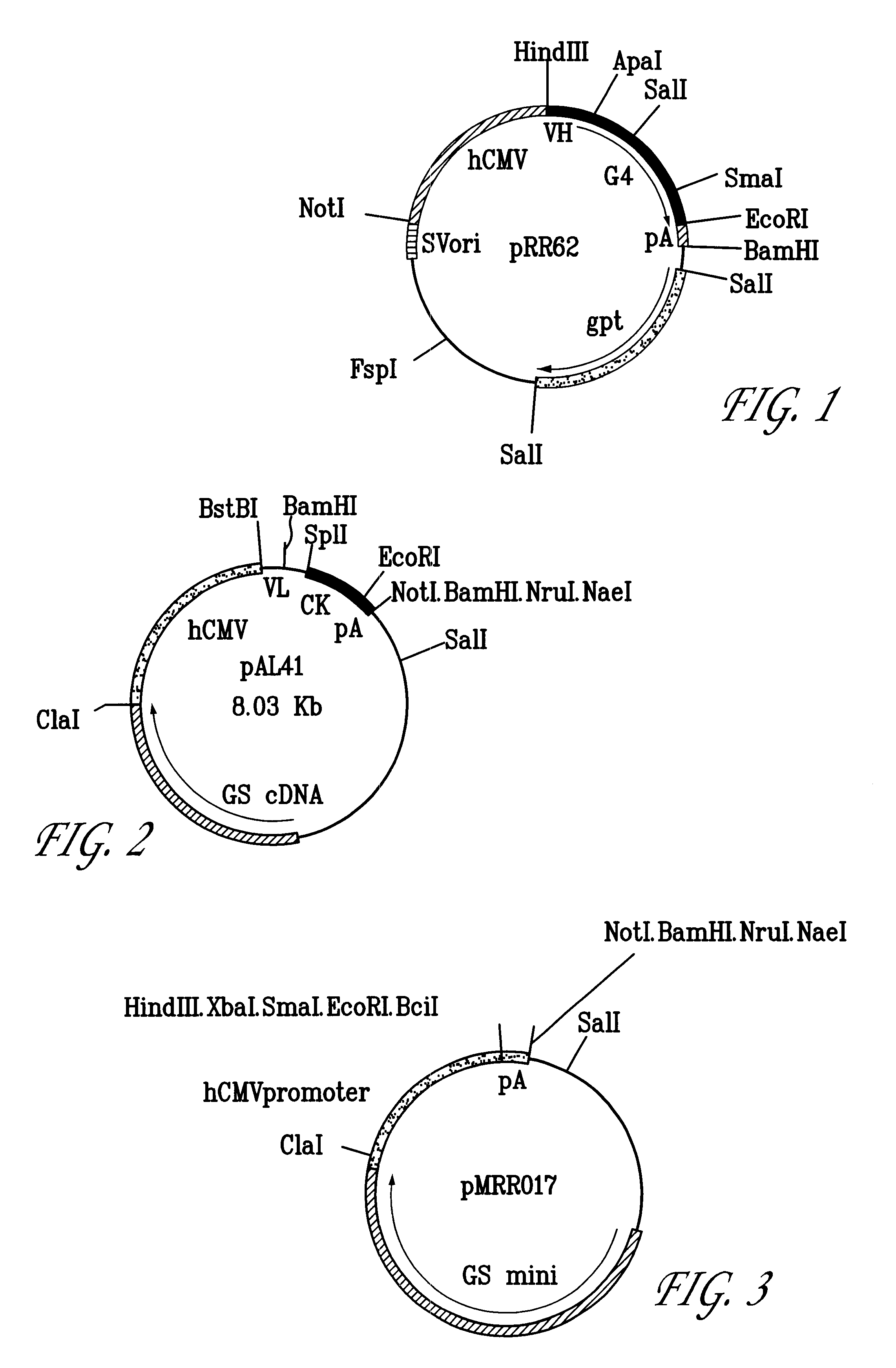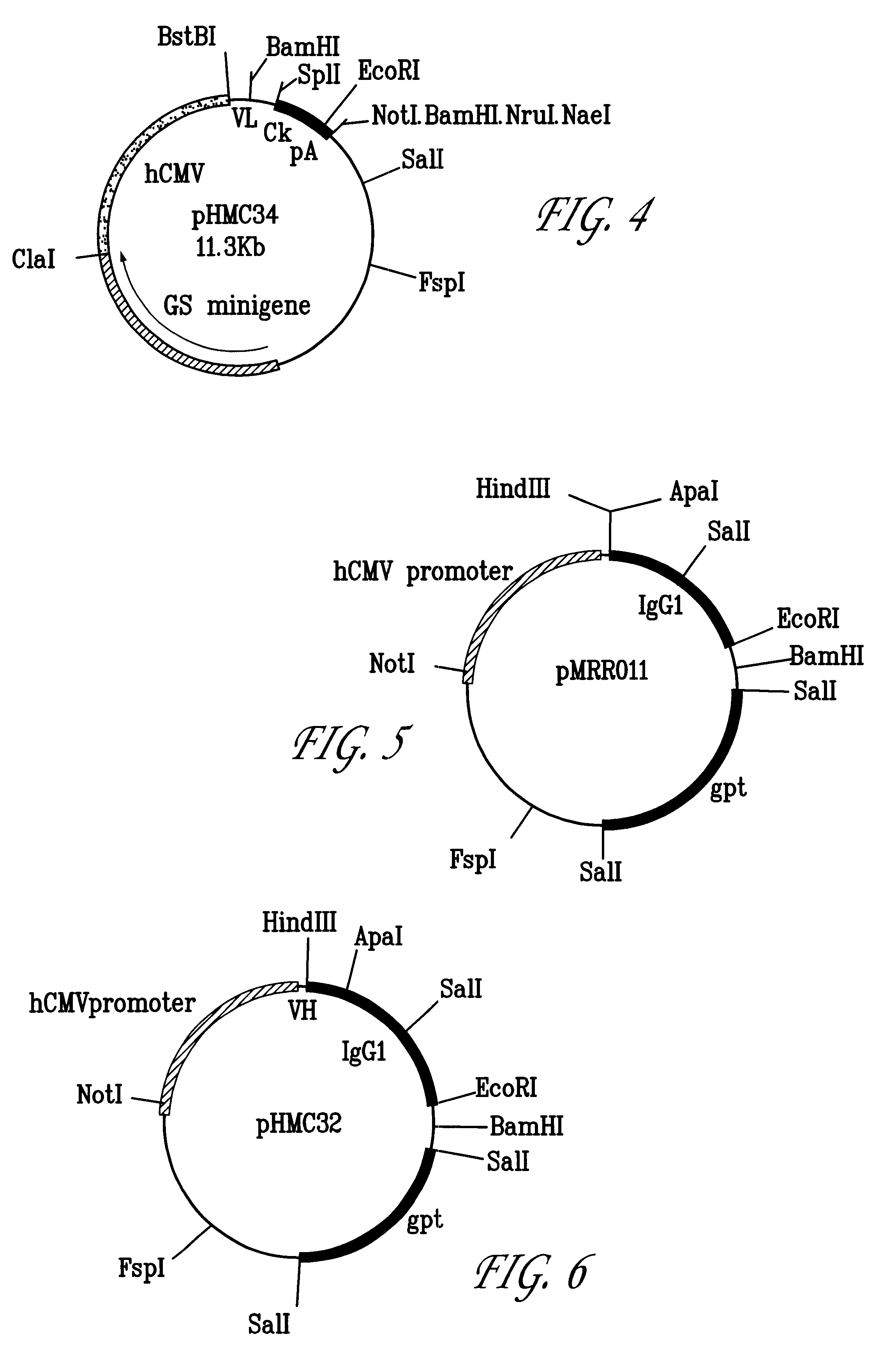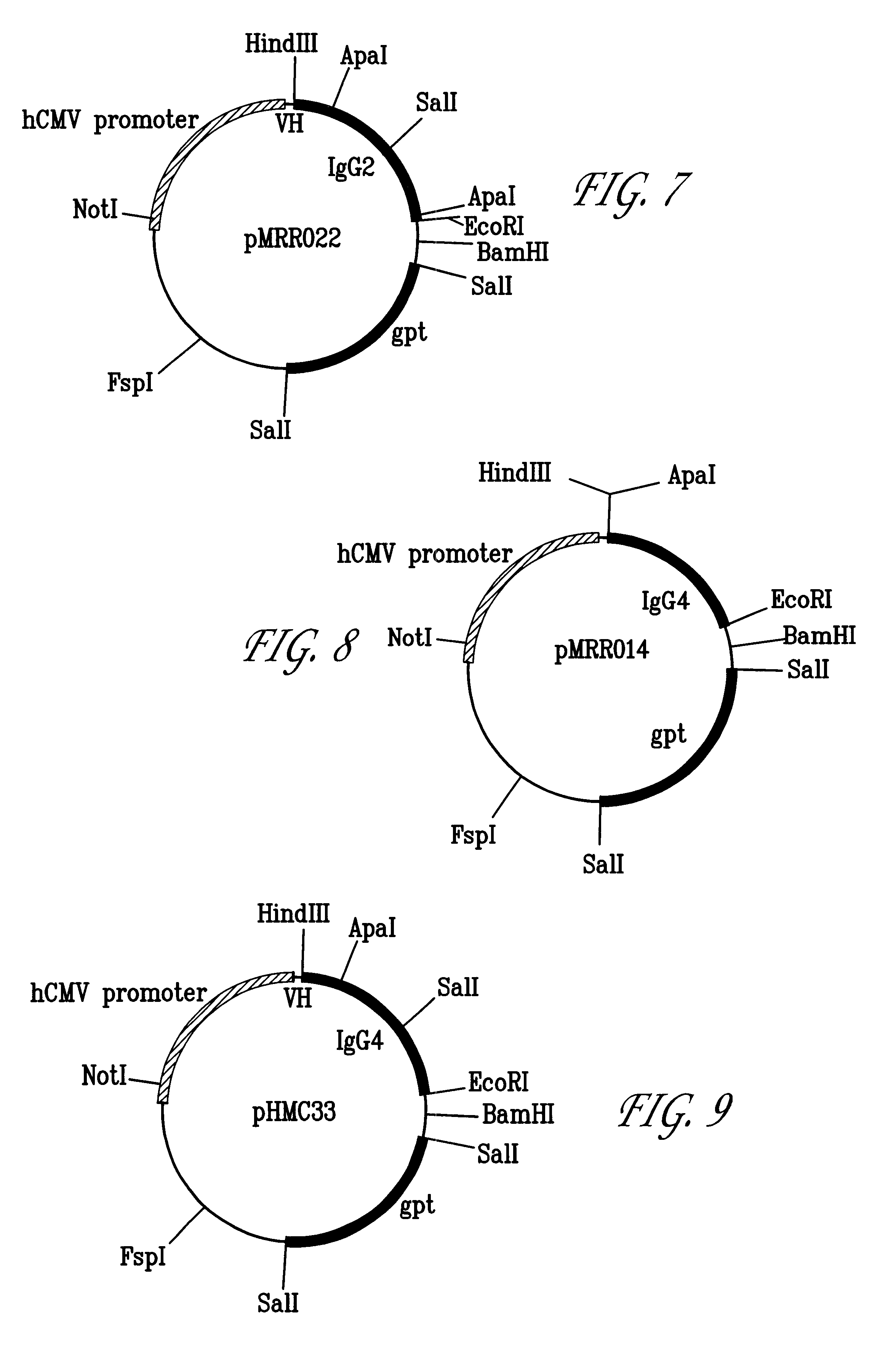Anti-HMFG antibodies and processes for their production
a technology of anti-hmfg antibodies and processes, which is applied in the field of humanised antibody molecules, can solve the problems of inherently limited human use of rodent mabs as therapeutic agents, hama, and polyclonal nature of natural immunoglobulins,
- Summary
- Abstract
- Description
- Claims
- Application Information
AI Technical Summary
Benefits of technology
Problems solved by technology
Method used
Image
Examples
Embodiment Construction
The following description of certain embodiments of the invention is provided by way of example only and is not to be regarded as placing any limitation on the scope of the protection claimed.
Molecular Cloning and Construction of the CTMO1 Chimeric Heavy Chain
The heavy chain variable domain of CTMO1 was cloned using the polymerase chain reaction. This enabled the construction of the chimeric version in a single step as described below.
Polyadenylated RNA was isolated from the CTMO1 hybridoma cell line using the guanidinium isothiocyanate / lithium chloride method [17]. Double stranded cDNA was synthesised and used as a template for PCR amplification of the VH gene. A set of twenty four 5' forward primers were synthesised to complement a sequence within the murine leader sequence of VH domains [16] and to introduce a BstEII restriction site. A set of twelve 3' reverse primers was synthesised to complement the framework 4 region of VH [20] and included an Apal restriction site.
The sequen...
PUM
| Property | Measurement | Unit |
|---|---|---|
| concentration | aaaaa | aaaaa |
| concentration | aaaaa | aaaaa |
| structure | aaaaa | aaaaa |
Abstract
Description
Claims
Application Information
 Login to View More
Login to View More - R&D
- Intellectual Property
- Life Sciences
- Materials
- Tech Scout
- Unparalleled Data Quality
- Higher Quality Content
- 60% Fewer Hallucinations
Browse by: Latest US Patents, China's latest patents, Technical Efficacy Thesaurus, Application Domain, Technology Topic, Popular Technical Reports.
© 2025 PatSnap. All rights reserved.Legal|Privacy policy|Modern Slavery Act Transparency Statement|Sitemap|About US| Contact US: help@patsnap.com



